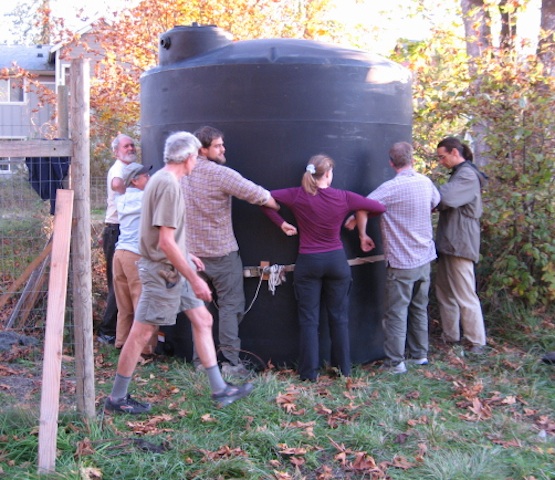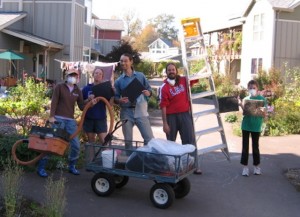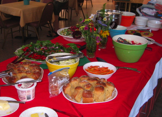INTRODUCTION TO THE “THEN AND NOW” SERIES
Visitors touring CoHo sometimes ask how our expectations for community prior to move-in differ from our current day-to-day reality.
Comparing “then and now” is the framework for this series of blog postings. The source of historical perspective is the CoHo newsletters published in 2006 and 2007 (they are still available on our website). This was an intensive time, with the primary focus on actively building the community (both in terms of actual construction of buildings and the collection of folks who would be our neighbors).
What were our dreams in 2006? What is our daily life like now in 2014?
First, read the original newsletter (link below), then return to this posting for current perspectives.
THEN…
Cohousing in Corvallis, Issue 6 – March 2006
AND NOW…
With the recent economic downturn, cost-conscious folks are quite focused on the financial side of life in cohousing. We moved in the fall of 2007, just before the real estate “bubble” hit hardest. Fortunately, most CoHoots had been able to sell their former homes and buy their CoHo units.
When real estate prices dropped across the country, Corvallis and CoHo also saw prices decline. Resales became more challenging. In 2014, the picture looks brighter and there is growing interest in buying cohousing units.
At the community level, many of the $$$ predictions were accurate.
Due to our sustainable building materials, our energy costs are lower. In 2010, half of our households made a bulk buy of solar panels for our individual units, saving even more money (especially with the tax incentives).
CoHo was able to get solar panels to provide power for part of our shared electricity needs. We also installed a well/cistern that will cut our costs for irrigation water.
See the blog posting How Many CoHoots Does It Take To Move a Cistern? for a short video of CoHoots in action.
Our Buildings Team has an extensive annual preventive maintenance program and our maintenance reserves are well funded (two factors that should make prospective buyers smile).
Our community meals offer fresh, local, organic food at very reasonable prices and households can purchase ingredients through our kitchen pantry.
Frequent sharing of resources, tasks, and information (often via our social email list CoHoChat) has saved lots of money we might otherwise have spent on child care, pet care, camping/recreational equipment, vehicles, etc. See GOT IT! blog posting for more insights on what is easily shared in a close-knit community where you have “next-door neighbor” relationships with 33 other households.


